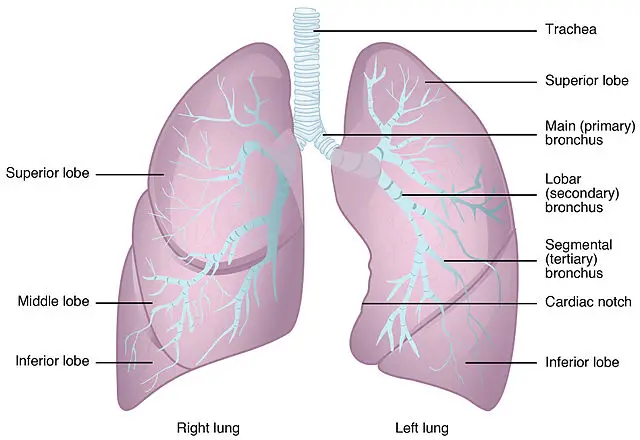
Asphyxia and hypoxia are two commonly used physiological terms that both refer to the insufficient supply of oxygen to the cells and tissues. While the definition of these two terms may be similar, the basic operating mechanisms and causes of these two conditions differ [1]. The main difference between these two terms is that asphyxia is caused by an injury or obstruction of airway passages either through strangulation, aspiration of food or through large quantities of fluids which result in a shrunken and airless state of the lungs while hypoxia is caused by inadequate delivery, uptake or utilization of oxygen in the blood to the body tissues, often caused by a reduction in partial pressure of oxygen, inadequate transport of oxygen or inability of tissues to use the supplied oxygen.
What is asphyxia?
Asphyxia is defined as a condition where the body doesn’t receive enough oxygen to allow for normal functioning or wherein the body has taken in or retained too much carbon dioxide to allow for normal bodily functions to be carried out [2]. This inadequate delivery, uptake or utilization of oxygen by body tissues may subsequently lead to the body not receiving enough required oxygen which in turn leads to an increase of carbon dioxide and hindrance of normal functioning [1].
Causes of asphyxia
Asphyxia usually occurs when the airways are either partially obstructed or physically blocked. This obstruction is often caused by the presence of a foreign body (such as a piece of food) which in turn leads to the inability of the body to gain oxygen [1]. It may also occur as a result of an injury or related medical conditions that lead to blockage of the airways. Common examples of airways being physically blocked include the presence of a foreign object which is lodged in the throat, choking, suffocation, strangulation and drowning. In addition, a range of injuries may subsequently lead to asphyxiation. These include collapsed lungs, inhalation of toxic fumes such as carbon monoxide, whooping cough, bacterial infections, heart failure, asthma, high blood pressure, allergic reactions and drug overdoses.
Signs and symptoms of asphyxia
There are a range of signs and symptoms associated with asphyxia. These include difficulty and / or noisy breathing, rapid increase in pulse, high blood pressure (hypertension), cyanosis of the face (also known as the bluish discoloration of the skin and mucous membranes), swollen veins on the head and neck, convulsions or seizures, paralysis and loss of consciousness [1]. These symptoms may in turn lead to extensive complications, the most serious of which includes coma, brain death and ultimately death [3].
Treatment of asphyxia
Common treatments include first aid and cardiopulmonary resuscitations (CPR), removal of lodged foreign bodies using the Heimlich manoeuvre, loosening of clothing and assessing the airways before administering the affected individual with the appropriate medication [1]. Depending on the subsequent symptoms, a range of treatments can then be applied. These include performing the Heimlich Manoeuvre, removal of the drowning victim from the water body and performing CPR, removal of any external physical items that may be blocking the airways such as plastic bags followed by the administration of the appropriate method of oxygenation and medication.
What is hypoxia?
Hypoxia is defined as a condition or state wherein the body tissues are not adequately supplied with a sufficient level of oxygen to sustain normal bodily functions. This is most commonly as a result of insufficient levels of oxygen in the blood. This term is sometimes used interchangeably with the term hypoxemia which describes a condition of low arterial oxygen however scientifically it is known that hypoxemia leads to hypoxia [5].
Causes of hypoxia
Common causes of hypoxia include anaemia, heart diseases, lung diseases and carbon monoxide poisoning. Anaemia occurs when the amount of functional haemoglobin is decreased which in turn affects the oxygen carrying abilities of the blood while carbon monoxide poisoning on the other hand occurs when the chemical binds to oxygen receptors on red blood cells which in turn lead to the blocking of oxygen. Severe asthma attacks may result in narrowing of the airways which in turn leads to hypoxia in young and aged individuals. Subsequent coughing may worsen symptoms as more oxygen is used while various lung diseases such as bronchitis and pneumonia may also result in hypoxia. Strong pain medication, heart problems, anaemia and cyanide poisoning may furthermore lead to inadequate oxygenation of body tissues [4]. Furthermore hypoxia may also occur in healthy individuals when they travel to higher altitudes. This may lead to altitude sickness which occurs as a result of lower partial pressure of oxygen in inhaled air. Healthy individuals who are deep sea divers may also be at risk if the gases in their oxygen tanks have been incorrectly prepared or if these tanks begin to rust as this rusting process will utilise the oxygen present in the tanks itself [5].
Signs and symptoms of hypoxia
The inadequate oxygenation of tissues will affect a range of metabolic activities taking place in the body. This will in turn result in a variety of indirect signs and symptoms that vary from person to person. These include an increase in the heart rate and cardiac output, shortness of breath, wheezing, sweating, coughing, confusion and facial cyanosis as well as the changing of skin colours and mucosal membranes to a cherry or bluish colour as a result of poor oxygen supply. The effects of hypoxia may be 1) localized such that it affects a specific area of the body or 2) generalized such that it involves the whole body. This may however be referred to as anoxia which is a complete deprivation of an oxygen rich blood supply throughout the whole body.
Treatment of hypoxia
Treatment may vary depending on the level of hypoxia and surrounding conditions. In order to treat or better yet, prevent hypoxia from occurring, individuals should attempt to keep their asthma under control. They should maintain good physical exercise and a healthy diet, try to obtain treatment for cardiac and lung diseases and anaemia and also be wary of common symptoms of hypoxia such that timely treatment may be applied. If individuals are experiencing hypoxia, they will need to go to the hospital for immediate treatment in order to receive more oxygen which is commonly administered through a small plug through the nose or via a mask that covers both the nose and mouth. In addition, an inhaler or asthma medicine may be taken orally to ease breathing. If the above common treatments are still unsuccessful, treatment via an IV may then be administered [4].
Main differences between asphyxia and hypoxia
The biggest difference between the two conditions is that asphyxia is a deprivation of oxygen at the tissue level. This is usually caused by an injury or obstruction of the airway passages either in the form of choking, strangulation or drowning. Hypoxia on the other hand is characterised by an inadequate supply of oxygen in the blood as well as the inadequate transportation and utilization of oxygen in the body. Both these conditions are generally treated in the same manner. That is by ensuring the airways, breathing and circulation and not restricted.
Summary of differences between asphyxia and hypoxia
| Asphyxia | Hypoxia |
| Asphyxia is defined as a condition in which the where the body doesn’t receive enough oxygen to allow for normal functioning caused as a result of an injury or obstruction to the airway passages | Hypoxia is defined as a condition wherein the body tissues are not adequately supplied with a sufficient level of oxygen caused as a result of inadequate delivery, uptake or utilization of oxygen by the body tissues |
| Common causes include:
· the presence of a foreign object which is lodged in the throat · choking · suffocation · strangulation · drowning |
Common causes include:
· anaemia · heart diseases · lung diseases · asthma · Carbon monoxide poisoning |
| Common treatments include:
· first aid · cardiopulmonary resuscitations (CPR) · removal of lodged foreign bodies using the Heimlich manoeuvre · loosening of clothing · assessing the airways · appropriate medication |
Common treatments include:
· hospitalization to receive more oxygen · an inhaler · appropriate medication · treatment via an IV |











